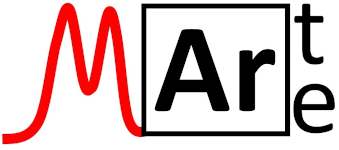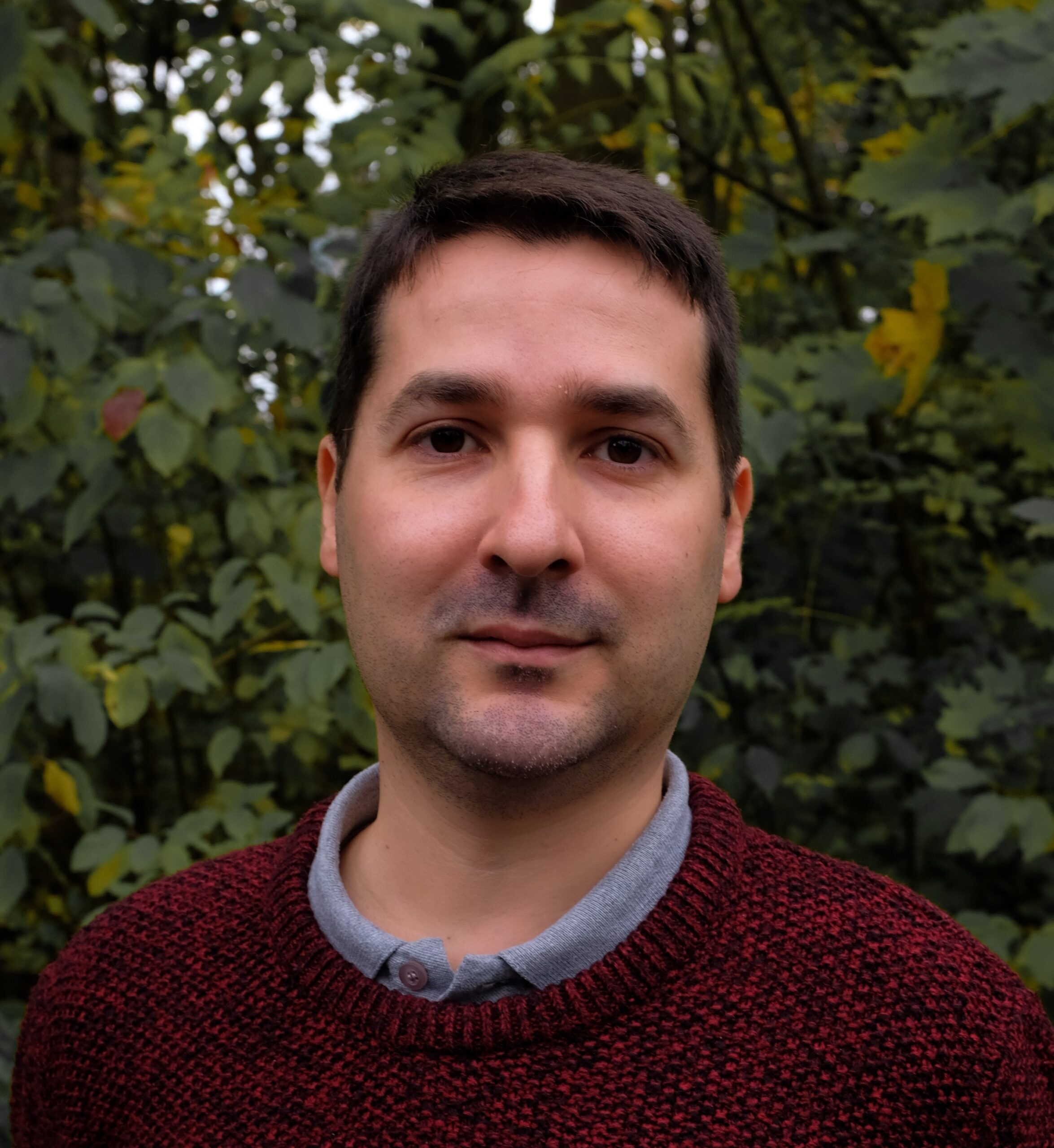
Call: +34 876 553 510
Email: ebolea@unizar.es
Address: c/Pedro Cerbuna 12, Universidad de Zaragoza, Facultad de Ciencias, Departamento de Química Analítica – Zaragoza (Spain)
ABOUT ME
Eduardo Bolea Fernández obtained his Bachelor and Master degrees in chemistry from the University of Zaragoza, Spain. He carried out PhD research at Ghent University, Belgium, and obtained his PhD degree in 2017. His PhD research focused on method development for ultra-trace elemental and isotopic analysis using tandem ICP-mass spectrometry (ICP-MS/MS). In October 2017, he got a postdoctoral research grant (BOF-UGent) focusing on high-precision isotopic analysis of mercury using multi-collector ICP-mass spectrometry for unravelling its biogeochemical cycle. In April 2018, he won the 2018 IUPAC-Solvay International Award for Young Chemists for the best PhD dissertation in the chemical sciences worldwide. In November 2019, he started a junior postdoctoral research grant (FWO) based on the development of new analytical methods and their application to metallomics and nanotechnology. In January 2022, he won the prestigious 2022 Young Scientist Winter Conference Award in Plasma Spectrochemistry for his contributions to the field of plasma spectrochemistry. In November 2022, he started a senior postdoctoral research grant (FWO) focusing on single-cell analysis in the biological sciences. In January 2023, he was awarded a 5-years Ramón y Cajal contract (Ministry of Science and Innovation, Spanish Government).
So far, Eduardo is (co)author of 39 publications in peer-reviewed international journals and his work has been presented in >50 lectures on international conferences and workshops.
PUBLICATIONS
2025
Rua-Ibarz, Ana; Nakadi, Flávio V.; Bolea-Fernandez, Eduardo; Bazo, Antonio; Battistella, Beatrice; Matiushkina, Anna; Resch-Genger, Ute; Abad, Carlos; Resano, Martín
Discrete Entity Analysis via Microwave-Induced Nitrogen Plasma–Mass Spectrometry in Single-Event Mode Journal Article
En: Analytical Chemistry, vol. 0, no. 0, pp. null, 2025, (PMID: 41084806).
@article{,
title = {Discrete Entity Analysis via Microwave-Induced Nitrogen Plasma–Mass Spectrometry in Single-Event Mode},
author = {Ana Rua-Ibarz and Flávio V. Nakadi and Eduardo Bolea-Fernandez and Antonio Bazo and Beatrice Battistella and Anna Matiushkina and Ute Resch-Genger and Carlos Abad and Martín Resano},
url = {https://doi.org/10.1021/acs.analchem.5c04341},
doi = {10.1021/acs.analchem.5c04341},
year = {2025},
date = {2025-10-14},
urldate = {2025-10-14},
journal = {Analytical Chemistry},
volume = {0},
number = {0},
pages = {null},
abstract = {In this work, single-event microwave-induced nitrogen plasma–mass spectrometry (single-event MINP-MS) was evaluated for the first time for the analysis of discrete entities such as nanoparticles, biological cells, and microplastics. Nitrogen (N2) effectively overcomes Ar-based polyatomic interferences, enabling (ultra)trace element determination of Fe and Se using their most abundant isotopes, 56Fe (91.66%) and 80Se (49.82%). Iron oxide nanoparticles (Fe2O3 NPs) ranging from 20 to 70 nm were accurately characterized, with excellent agreement with established sizing techniques, such as transmission electron microscopy (TEM) and dynamic light scattering (DLS). A limit of detection (LoD) of 8.6 ag for Fe─equivalent to an LoDsize of 19 nm for Fe2O3─was achieved, which is significantly lower than recent values reported for high-end quadrupole-based ICP-MS. Selenium nanoparticles (SeNPs) of 150 and 250 nm were also accurately characterized, without the N2-based plasma experiencing issues handling relatively large metallic NPs (linearity, R2 = 0.9994). Se-enriched yeast cells (SELM-1 certified reference material) were successfully analyzed via single-cell MINP-MS using external calibration based on SeNPs and a transport efficiency-independent approach. In addition, 2–3 μm polystyrene (PS) and polytetrafluoroethylene (PTFE) were accurately sized by monitoring 12C+, confirming the method’s suitability for handling micrometer-sized polymeric materials (microplastics). The average duration of individual events (680 ± 160 μs) suggests that the digestion of individual entities in N2-based plasmas is comparable to that in Ar-based plasmas. These results open new avenues for this instrumentation as an alternative to ICP ionization sources, also in the context of discrete entity analysis.},
note = {PMID: 41084806},
keywords = {},
pubstate = {published},
tppubtype = {article}
}
Bazo, Antonio; Bolea-Fernandez, Eduardo; Rua-Ibarz, Ana; Aramendía, Maite; Resano, Martín
En: Anal. Chem., 2025, ISSN: 1520-6882.
@article{nokey,
title = {Ions with Ions, Entities with Entities: A Proof-of-Concept Study Using the SELM-1 Yeast Certified Reference Material for Intra- and Extracellular Se Quantification via Single-Cell ICP-Mass Spectrometry},
author = {Antonio Bazo and Eduardo Bolea-Fernandez and Ana Rua-Ibarz and Maite Aramendía and Martín Resano},
url = {https://pubs.acs.org/doi/10.1021/acs.analchem.5c01588},
doi = {https://doi.org/10.1021/acs.analchem.5c01588},
issn = {1520-6882},
year = {2025},
date = {2025-06-07},
urldate = {2025-06-07},
journal = {Anal. Chem.},
abstract = {In this work, two novel nanoparticle (NP)-based calibration strategies, external calibration and a relative method, have been explored for single-cell ICP-mass spectrometry (SC-ICP-MS) analysis. The fundamental principle of these methods is to rely on individual entities (well-characterized NPs of the target analyte) for calibration rather than on ionic standard solutions. The performance of the NP-based calibration approaches has been compared to that of the reference method (particle size with AuNP standards). In addition to the intracellular Se content (mass per individual cell), the extracellular Se (dissolved fraction) was also determined directly and simultaneously using the average background from the SC-ICP-MS time-resolved signal. The figures-of-merit of the methods developed have been evaluated by relying on the analysis of the SELM-1 cell-certified reference material, consisting of Se-enriched yeast cells, and certified for its total Se content (intracellular + extracellular Se). All methods successfully determined the Se elemental contents, but an improvement in accuracy and precision was observed for the NP-based methods compared to the reference one. Furthermore, the NP-based methods were found to be less time-consuming, more straightforward, and more user-friendly in terms of calculations. These results open new avenues for calibration in quantitative SC-ICP-MS analysis and call for a fundamental change in the methodology, where the determination of ionic contents is based on the use of ionic standard solutions for calibration, while the determination of elemental contents in discrete micro/nanoentities, such as cells, should ideally be based on calibration using standard entities, thus avoiding the need to calculate a transport efficiency coefficient.},
keywords = {},
pubstate = {published},
tppubtype = {article}
}
Rodler-Rørbo, Alexandra; Baragona, Anthony J.; Verbeemen, Eliah J.; Sørensen, Lasse Vilien; Çakmakoğlu, Berk; Helvaci, Cahit; Bolea-Fernandez, Eduardo; Rua-Ibarz, Ana; Vanhaecke, Frank; Becker, Hilary; Artioli, Gilberto; Zabrana, Lilli; Debaille, Vinciane; Mattielli, Nadine; Goderis, Steven; Claeys, Philippe
Cinnabar for Roman Ephesus: Material quality, processing and provenance Journal Article
En: Journal of Archaeological Science, vol. 173, pp. 106122, 2025, ISSN: 0305-4403.
@article{RODLERRORBO2025106122,
title = {Cinnabar for Roman Ephesus: Material quality, processing and provenance},
author = {Alexandra Rodler-Rørbo and Anthony J. Baragona and Eliah J. Verbeemen and Lasse Vilien Sørensen and Berk Çakmakoğlu and Cahit Helvaci and Eduardo Bolea-Fernandez and Ana Rua-Ibarz and Frank Vanhaecke and Hilary Becker and Gilberto Artioli and Lilli Zabrana and Vinciane Debaille and Nadine Mattielli and Steven Goderis and Philippe Claeys},
url = {https://www.sciencedirect.com/science/article/pii/S0305440324001900},
doi = {https://doi.org/10.1016/j.jas.2024.106122},
issn = {0305-4403},
year = {2025},
date = {2025-01-01},
urldate = {2025-01-01},
journal = {Journal of Archaeological Science},
volume = {173},
pages = {106122},
abstract = {Ephesus was an important harbor city that flourished during the Roman period and ancient texts mention Almadén in Spain and the Cilbian fields of Ephesus as important cinnabar sources in antiquity. This work investigates whether imported cinnabar was used and whether this could be related to changes in painting activities over time. Microscopic analysis indicates a consistent preparation of cinnabar, hinting at a uniform source material quality or processing technique. However, the use of cinnabar varies among the architectural structures studied, indicating a plurality of painting techniques. A few of the analyzed cinnabar samples overlap with Turkish- and Balkan reference Pb isotope ratios; three samples from tabernas, however, deviate from this. The Hg isotope ratios reveal that cinnabar from carbonate-hosted deposits was likely used, and that processing of cinnabar included heating as suggested by ancient texts. Most notably, a correlation exists between the geochemical data and the painting technique – shifts in sourcing and cinnabar usage are potentially assignable to building chronology and/or usage. Through the lens of material provenance and processing, Ephesian cinnabar brings the organization of pigment trade into focus.},
keywords = {},
pubstate = {published},
tppubtype = {article}
}
Sullivan, Kaj V.; Moser, Katharina; Costas-Rodríguez, Marta; Bolea-Fernandez, Eduardo; Vanhaecke, Frank
High-precision Cu isotopic analysis of human dietary Cu sources via multi-collector ICP-mass spectrometry Journal Article
En: Food Chemistry, vol. 470, pp. 142673, 2025, ISSN: 0308-8146.
@article{SULLIVAN2025142673,
title = {High-precision Cu isotopic analysis of human dietary Cu sources via multi-collector ICP-mass spectrometry},
author = {Kaj V. Sullivan and Katharina Moser and Marta Costas-Rodríguez and Eduardo Bolea-Fernandez and Frank Vanhaecke},
url = {https://www.sciencedirect.com/science/article/pii/S0308814624043231},
doi = {https://doi.org/10.1016/j.foodchem.2024.142673},
issn = {0308-8146},
year = {2025},
date = {2025-01-01},
urldate = {2025-01-01},
journal = {Food Chemistry},
volume = {470},
pages = {142673},
abstract = {The disruption of Cu homeostasis is associated with the pathogenesis of many diseases and can result in alterations in Cu isotope fractionation. Changes in the Cu isotope ratio (65Cu/63Cu) of body fluids and tissues have been observed in liver disorders, cancers, and other diseases, displaying diagnostic/prognostic potential. However, it is not entirely clear whether certain physiological or lifestyle factors may also influence the bodily Cu isotopic composition, potentially obfuscating the signature of the pathology. To ascertain whether differences exist between food products, the Cu isotopic composition of 29 significant dietary Cu sources has been determined for the first time. The general enrichment of Cu and its heavy isotope, 65Cu, in legumes, nuts, and seeds (major Cu sources in plant-based diets) was revealed, suggesting that individuals with plant-based diets may have a bodily Cu isotopic composition offset from that of individuals with omnivorous diets, thus requiring controlling for in study design.},
keywords = {},
pubstate = {published},
tppubtype = {article}
}
Bazo, Antonio; Bolea-Fernandez, Eduardo; Billimoria, Kharmen; Rua-Ibarz, Ana; Aramendía, Maite; Menero-Valdés, Paula; Morley, Jack; Neves, Sara; Sánchez-Cachero, Armando; Goenaga-Infante, Heidi; Resano, Martín
En: J. Anal. At. Spectrom., pp. -, 2025.
@article{D5JA00253B,
title = {A novel particle mass calibration strategy for the quantification of AuNPs in single cancer cells via laser ablation ICP-mass spectrometry. A case study},
author = {Antonio Bazo and Eduardo Bolea-Fernandez and Kharmen Billimoria and Ana Rua-Ibarz and Maite Aramendía and Paula Menero-Valdés and Jack Morley and Sara Neves and Armando Sánchez-Cachero and Heidi Goenaga-Infante and Martín Resano},
url = {http://dx.doi.org/10.1039/D5JA00253B},
doi = {10.1039/D5JA00253B},
year = {2025},
date = {2025-01-01},
urldate = {2025-01-01},
journal = {J. Anal. At. Spectrom.},
pages = {-},
publisher = {The Royal Society of Chemistry},
abstract = {Laser ablation ICP-mass spectrometry (LA-ICP-MS) has developed as a powerful tool for elemental quantitative analysis of individual cells, assuring that the content of each cell is analyzed individually. However, this technique is still limited by the difficulties associated with calibration using solid standards. This work proposes a particle mass calibration strategy that is independent of both the properties and thickness of the gelatin films used for calibration, overcoming a significant drawback of previously established methods. The fundamental principle of this strategy relies on the individual ablation of nanoparticles (NPs) of well-characterized size that are embedded in the films, so that their mass can be directly used for calibration without the need to calculate their exact concentration within the gelatin. The performance of the newly developed method was compared to that of the previously reported approaches (ionic and particle number calibration) in terms of linearity and homogeneity between different films prepared from the same gelatin solution. As a case study, the three calibration strategies were used for the quantitative analysis of HeLa cancer cells exposed to AuNPs. In parallel, in-suspension single-cell (SC) ICP-MS Au data were obtained and used as reference for comparison with the three LA-SC-ICP-MS strategies. The results obtained with the novel particle mass approach demonstrated better accuracy and repeatability over three different working sessions, addressing key limitations and providing a robust and reliable method for quantitative LA-SC-ICP-MS analysis. The particle mass method holds promise for quantitative LA-ICP-MS analysis of samples beyond NP-exposed cells, such as biological tissues.},
keywords = {},
pubstate = {published},
tppubtype = {article}
}

